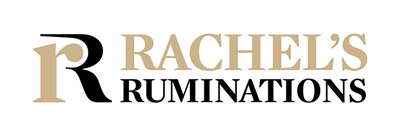Hluboká Castle, South Bohemia, Czechia: Wow!
“That’s not a real castle. I mean, it’s not medieval. It’s probably from the 19th century. It was meant to look medieval, but isn’t.” This was my comment when I had my first glimpse of Hluboká Castle (more properly called the State Chateau of Hluboká or, even more correctly, Hluboká nad Vltavou).
Disclosure: I saw Hluboká Castle as part of a press trip sponsored by Visit South Bohemia and Czech Tourism.
Another disclosure: This article contains affiliate links. If you click on one and make a purchase, I will receive a small commission.

I was right, in terms of the facts: Hluboká Castle dates almost in its entirety to the 19th century. After seeing so many Neo-Gothic castles, I can spot them a mile away.
I was wrong, though, to see that as making it somehow less of a “real” castle.
I’ve written about this period in castles before. Castle de Haar, for example, in the Netherlands and Balmoral Castle in Scotland are both 19th-century Romantic visions of what a medieval castle should look like, but with all the mod-cons like running water and electricity.
I’ve been a bit scornful of this period in the past. I still prefer to visit castles that retain their medieval appearance like Muiderslot in the Netherlands or Burghausen in Germany. I do understand, though, that styles in architecture, as in everything, change. If the Middle Ages is all the rage, and you have enough money, why not build a beautiful pseudo-medieval castle, and make it a lot more comfortable than a real one? What will people 100 years from now think of the current trend of “industrial chic”?
I called Castle de Haar “stunningly ornate” in my post about it. Well, this one is even more so.

Hluboká Castle
Hluboká Castle (pronounced something like hóo-boo-ka) has gone through a number of forms, starting with an actual Gothic castle on the same site in the 13th century. The current edifice dates to a complete reconstruction in the 19th century, intentionally copying the Neo-Gothic style of Windsor Castle in England, complete with English-style formal garden.
It was the Schwarzenberg family who were responsible. They had owned the castle and grounds since the 17th century and clearly had plenty of money to spend on this and their other many properties. According to Wikipedia, Adolph Schwarzenberg, the last owner of Hluboká Castle, also owned Český Krumlov Castle and Třeboň in South Bohemia, Schwarzenberg Palace and Salm Palace in Prague, as well as Palais Schwarzenberg in Vienna, among other properties.
Adolph Schwarzenberg was firmly anti-Nazi and made no secret of it, even before the war. When the German army took over, he had to flee the country and the Nazis confiscated all of his property. He didn’t receive it back after the war either, since, as Czechoslovakia became increasingly communist, the government passed a law called the Lex Schwarzenberg, specifically so that they could seize his property.
Today the castle is a National Cultural Monument, open to the public and for events.

The castle’s interior
While my immediate impression of the castle’s exterior was not very enthusiastic, it’s the interior that changed my mind. I was absolutely blown away by the extravagant décor inside Hluboká Castle. It is truly spectacular.
It’s not just that there are objects of great value in every room – elegant furniture, masterful paintings, probably priceless ceramics and other objects – but that the rooms themselves are works of art. You’ll notice skillfully-carved decorative paneling, for example, on the walls, designed to frame the pictures and ceramics hanging on them. The ceilings are artworks of their own: carved beams, painted leather, with luxurious chandeliers.

Most of these paintings, furniture, ceramics and other objects, by the way, pre-date the castle. Some, I’m sure, were collected by many generations of Schwarzenbergs. The antique furnishings lend an air of venerable old age to the rooms.
The entrance hall makes the intended first impression, looking like a baronial hunting lodge somewhere in England. There are antlers mounted on the walls as well as suits of armor and lots of medieval weaponry and tapestries.

We toured reception rooms, a bedroom – imagine sleeping there! – and many other rooms, all of them awe-inspiring in one way or another. I kept stopping to focus on particular pieces of furniture that drew my gaze. The workmanship is wonderful on so many of them, and they’re in remarkable condition, even the ones that are centuries old.

The library was my favorite room on our tour (The “representation rooms” tour). A long, high-ceiling, narrow room, it’s dark with paneling and lined with floor-to-ceiling intricately-carved bookshelves. The floors are inlaid and the comfy-looking chairs are upholstered in red. At one end is a fireplace in two colors of marble with, in front of it, what appears to be a golden table.

All of these impressions – these public rooms on the “representation rooms” tour are just packed with detail – can become too much. Leaving the castle and strolling the gardens was a welcome change. I would have liked, though, to take one of the other tours as well, after a short breather.

Hluboká Castle tours
There are several tours available. None of them seem to have published scheduled times, and according to the castle’s website there is no need to reserve. The castle is open daily in July and August but closed on Mondays the rest of the year.
It’s also not clear how often the tours run in English. Our tour guide’s English was excellent and his knowledge was absolutely encyclopedic when it came to the Schwarzenberg family. He recited the information rather robotically about each room, but then he was able to answer in almost too much detail any question we posed about any item we saw. He knew every painting, for example: not just who the painting depicted, but also that person’s relationship to the family and a bit of that person’s life story.

The castle offers several additional tours, each of which has a separate entrance fee:
- The Representation Rooms tour that we took covers the most luxurious parts of the interior, and mostly they are the rooms where the owners received and entertained guests.
- The Private Apartments tour focuses on the last few generations who actually lived here. It includes their daily rooms: dining room, study, bedrooms, bathrooms, etc., apparently amply decorated with hunting trophies.
- The Suite Rooms tour looks at 13 rooms that were only recently opened for viewing: the guest apartments, where friends and other visitors stayed. It also includes a viewing of the family’s silver.
- A short Winter tour, only offered in the winter months, includes a number of private rooms used by the last few generations of Schwarzenbergs.
- On the shorter Chateau Kitchen tour, visitors see the kitchen facilities that served such a large establishment.
- You can also climb the Chateau Tower (52 meters tall) to see the view over the castle’s park and the surrounding landscape.
Make sure, if you visit, to take a stroll around the grounds as well, at least if it’s summertime. Notice some of the details on the exterior as you walk around the castle – I particularly liked the gargoyles.
Click here for day trips from Prague that include a stop at Hluboká Castle.
Some of the tours are wheelchair accessible, but make sure to contact the castle ahead of time to let them know you’re coming. The Representation Rooms tour includes a stairway at the start, with equipment for a wheelchair. The first half of the Private Apartments tour is accessible, and part of the kitchen tour as well. The Winter tour is entirely accessible.
Where is Hluboká Castle?
The castle is about 45 minutes’ drive from Ceský Krumlov, a UNESCO site that is much better-known than Hluboká Castle. It’s only about 20 minutes from České Budějovice. There doesn’t seem to be any easy way to visit the castle via public transportation. You’d need to rent a car, at least for the day, or take a tour.

České Budějovice is a lovely small city that is pretty unknown but a great place to visit. It’s much less tourist-filled than Prague or Ceský Krumlov. I’d suggest staying there and visiting Ceský Krumlov and Hluboká Castle on day trips.
Book your accommodations in České Budějovice!
Have you been to Hluboká Castle or České Budějovice? Feel free to add a comment below!





